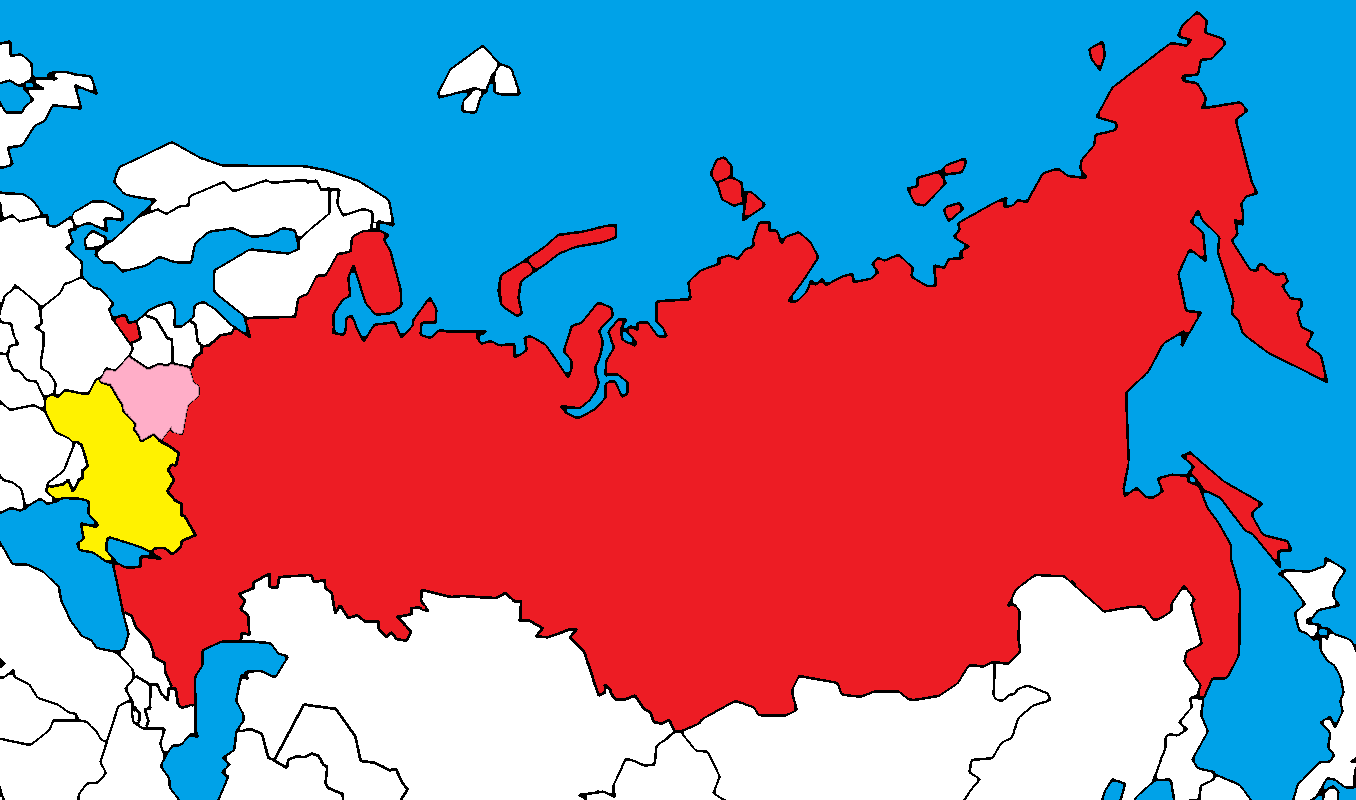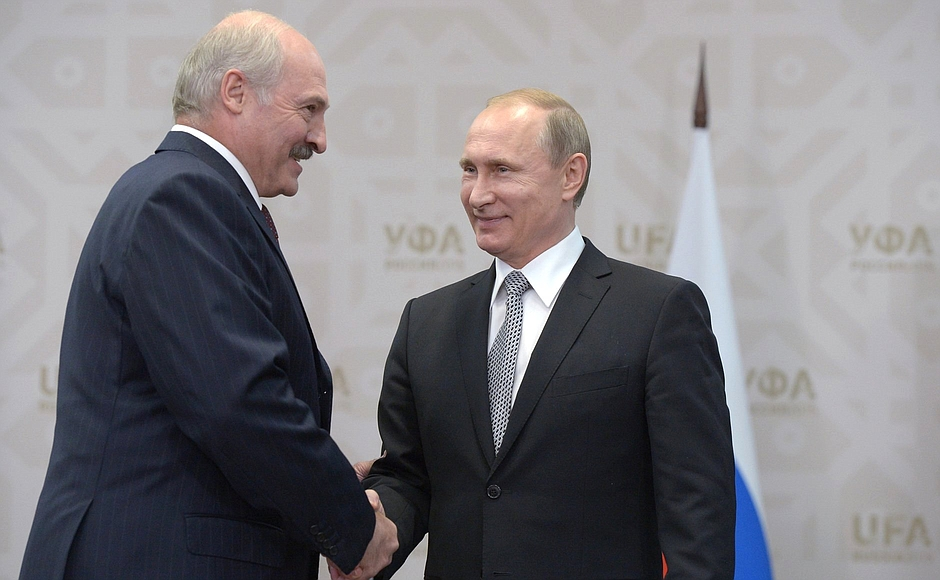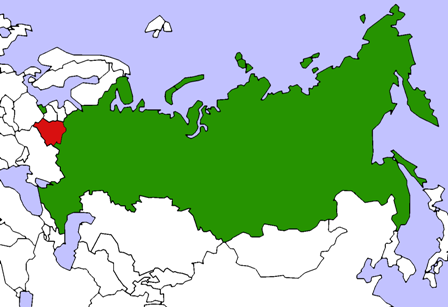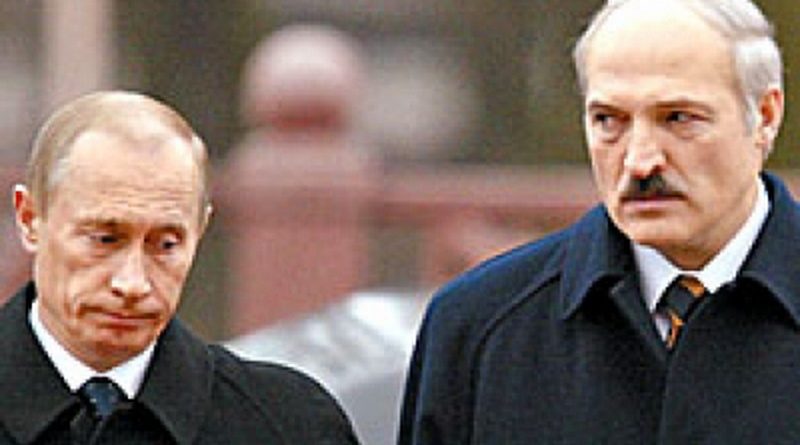Ukraine, NATO, and the EU are once again concerned that the ongoing Russian military build-up near Ukraine might be an indication of an impending new assault on Ukraine. The information space is full of information on force composition and diplomatic efforts to defuse the situation, as well as multiple analyses on the likelihood of war, possible scenarios, consequences and not at least, advice on how to prevent Russia from yet another violation of Ukraine’s territorial integrity.
Most have one thing in common: they address a three-dimensional problem with a one-dimensional analysis. The use of military power is addressed in isolation from the use of non-military means -- diplomatic, or political, or energy, or economic, or informational, or religious, or legal, or security challenges. The assessments are limited in time, space, and purpose. To make things worse, even the military sphere is too often seen through the prism of land operations, ignoring the three-dimensional aspect of military operations.
A holistic, cross-sectoral, and three-dimensional analysis is essential to make sense of the prevailing security situation as the basis for the prediction of future developments. We basically need to understand the Russian Hybrid War strategy.
The main battlespace occurs inside the cognitive spaces of populations and key decisions- and policymakers. The strategy exploits the protest potential of the population of both the nation under assault and that of its partner nations. It manipulates and reinforces existing vulnerabilities trying to ignite social instability. It aims to destabilize the nation from within by inducing economic hardship, corrupting the juridical and political system, undermining trust in government, politicians, institutions, and democratic processes, and not at least, create fear and fostering inaction.
Hybrid War exists below the threshold of war. It is designed to ensure victory through limited use of military power. Its consequences, however, is as far-reaching and dramatic as any conventional war.
Hybrid War knows no borders and takes place across all sectors of society. Since the different instruments of power are used in multiple dimensions and on multiple levels simultaneously in a synchronized fashion, detecting and responding to Hybrid War becomes exceedingly difficult.
The military part of the Hybrid War has until now played a supporting role only. The military efforts are supporting and reinforcing the effects of the non-military means.
While this only represents some of the key features of the Hybrid War, it is the starting point for my assessment of the situation and predictions of what follows.
Russian Diplomacy: a mix of hard power and (not so) diplomatic signalling
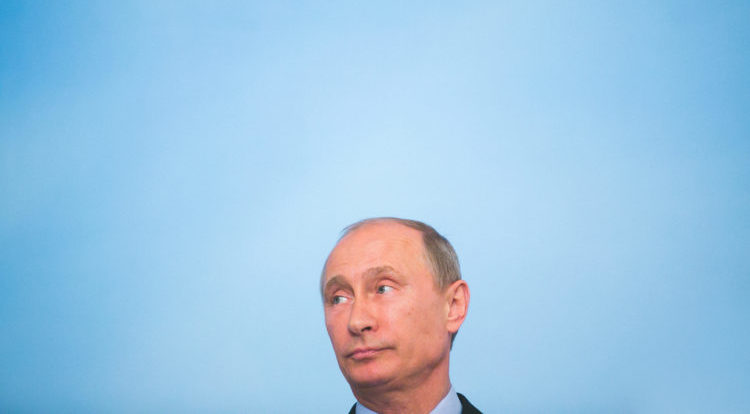
Normally, diplomacy is seen as a broad range of measures to influence the decisions and behaviour of foreign governments through dialogue, negotiation, and other measures short of war or violence.
Russian diplomacy, however, is a form of coercive diplomacy: a mix of hard power and (not so) diplomatic signalling. It both instigates conflicts and introduces itself as the key pivot power for conflict resolution. This has been demonstrated in both Georgia, Ukraine, and lately, Belarus.
The effectiveness of its coercive diplomacy was confirmed in March-April 2021 when it massed military forces along the borders of Ukraine. Putin was rewarded with a summit with President Biden on June 16.
Having had its Great Power status confirmed, Russia is increasingly acting like one. The coercive part of its diplomatic efforts has been turned up a notch or two. The result is:
- a European energy and migration crisis;
- Russia’s suspension of its diplomatic mission to NATO;
- warnings to the West against crossing the “red line”;
- and lastly, another military escalation along the borders of Ukraine.
This does not only include a military build-up. Ukraine is facing Russia's large-scale arms supplies across the border to the temporarily occupied territories of the Donetsk and Luhansk regions and Crimea.
We see a breakdown of Russia's relations with NATO and de facto freezing of political relations with the EU (while maintaining a technical dialogue on trade, health, and climate). Russia is transitioning to work only with "key players" (USA, France, Germany).
In the article “Détente 2.0” (Разрядка 2.0), former Russian diplomat Vladimir Frolov argues that in the new Russian foreign policy, Moscow is ready to interact with the West only on extremely limited areas on the basis of a "balance of interests." There will no longer be interaction only on issues of importance to the West, while Russian preferences and concerns are ignored. The policy is based on the assessment that the West is the one interested in détente, being in a state of crisis and decline, while Russia is consolidated, has impressive reserves (gold and foreign exchange reserves exceeded $620 bn), and are forcing the West to compromise by creating “tension points” in regions important to the West.
According to Frolov,
“By launching a ‘hedgehog in Macron’s African shorts’ in Mali” it hopes to make Paris more attentive to Russian interests in Ukraine. “Or, by encouraging the separatism of Bosnian Serb leader Dodik, who threatens to destroy the post-Dayton institutions of Bosnia and Herzegovina, which is likely to lead to renewed civil war, Russia is showing the EU and NATO the prospect of a destabilizing crisis in the "soft underbelly" of Europe.”
Russian-Chinese air exercises and naval patrols around the Japanese islands are similarly meant to influence US strategy and priorities.
Frolov argues that Moscow has “discovered that a new Cuban Missile Crisis over Ukraine could be very effective in getting Biden’s attention and inflaming his desire for a personal engagement with Putin. Of course, Moscow uses this as political leverage over the US, since the last thing Biden needs at this point is another 'war in Ukraine' crisis to distract him from China."
[bctt tweet="Russia wants a new European security architecture where no decisions that might affect Russia's security will be taken without it. " username="euromaidanpress"]
This might explain the recent military build-up along the Ukrainian borders, which comes on top of a process that has been ongoing since 2014.
Russia’s emerging role as a mediator in international conflicts supports several of Russia’s strategic goals.
- It addresses Russia’s ambitions for international status;
- It matches Russia’s conception of Great Power roles and responsibilities.
In Moscow’s worldview, Great Powers have additional rights, but also take on additional responsibilities for peace and security, particularly in their sphere of influence. The role is not at the least meant to directly benefit Russia’s foreign policy goals.
In the face of the military build-up and threat of further deterioration of European security, President Putin offered the USA, the EU, and NATO a glimmer of hope of a political solution to the increasing tension. He called for negotiations on a legal and juridical binding agreement that will rule out any further eastward expansion of NATO
, hoping to exclude Ukraine (as well as Finland and Sweden) from a future NATO membership.
The West will, however, not take the bait. Despite the subtle promise of a “political solution,” Russia will fail to deliver. A concession on these terms will offer nothing but more hostilities. For Ukraine, it offers only a choice between further war for survival or its surrender.
The diplomatic reaction from the West was, therefore (and as Russia was bound to expect), dismissive. President Biden stated that "I don’t accept anybody’s red lines." White House press secretary Jen Psaki rejected the idea that Washington would provide a guarantee that Ukraine will not enter NATO, stressing that “NATO member countries decide who is a member of NATO, not Russia.”
Fearing further Russian military aggression against Ukraine, the West is preparing measures in an attempt to dissuade the Russian Federation. NATO threatens with economic, financial and diplomatic costs only, while Germany and France warn about serious consequences (later specified as sanctions).
On Friday, President Joe Biden stated that he is developing “comprehensive initiatives to make it difficult for Russian President Vladimir Putin to invade Ukraine,” which some see as an indication that he might be willing to cut off Russian access to the global financial transaction system “SWIFT.”
That is, however, not likely to happen. After more than seven years of war and continuous breaches of international laws and conventions, leading up to the point where Russia is recognized as a threat to European peace and security, there is no reason to believe that sanctions from the USA or the EU will deter a Russian invasion (IF Russia finds this necessary to defeat Ukraine).
Why? The West might already be held hostage to Russian blackmail.
Blackmailing the political leadership of Ukraine & the West
Most analysts and diplomats would argue that the Ukrainian population would never accept anything else than a western trajectory. In the excellent article “Ukraine Will Fight, and Ukraine Will Be Right,” Olga Tokariuk argues that
“Ukrainians now know very well what membership of the ‘Russian world’ foretells: destruction, decay, and repression. They do not want such a future for their children. And they will fight any attempt by Russia to seize more Ukrainian territory.”
Unfortunately, the destiny of Ukraine is not decided by Ukraine and its population alone. It is also decided by Russia and the West.
The moment the latter gives up on Ukraine, Russia will take one huge leap closer to victory.
[bctt tweet="As Afghanistan (and Iraq, and Libya) has shown, international support has a “best-before date.” The West, ironically, constitutes the soft underbelly of Ukraine." username="euromaidanpress"]
Ukraine’s politics have, however, a tremendous impact on its international support. Any suspicions of sabotage of reforms, corruption, breaches to the principle of distribution of power, pro-Russian affiliation, dismissal of reformists, diminution of the governance and autonomy of key institutions, attack on the anti-corruption framework, revanchism, infighting or misuse of power undermine trust and weaken Ukraine.
They impact relationships between the state and its citizens, international investors, and financial institutions, and between Ukraine and its international partners. Additionally, they undermine Ukraine's reputation and shape the international community's perception of Ukraine, all of which unwittingly (or not) support the Russian strategy.
Ukraine has done all the above for decades (since the Hybrid War started), leaving it extremely vulnerable to Russia’s attempt to undermine its statehood. The lack of unity in the parliament in the face of “war in peacetime” weakens Ukraine’s chance of survival.
Ironically, the Russian build-up might be a consequence of what Ukraine has achieved despite all of the above-mentioned political turmoil.
Several key reforms have been pushed through. The autocephalous (self-governing) status of the Orthodox Church of Ukraine in January 2019 became a reality for many reasons, of which political courage was one. The decision greatly reduced the Russian Orthodox Church and Russia’s influence in Ukraine. Among institutions, the church has the second-highest level of public trust. Former president Poroshenko banned Russian social networks and search engines. Lately, President Zelenskyy has also started tackling the pro-Russian political forces and news outlets, further eroding Moscow’s ability to influence the population and key decision- and policymakers.
Opinion polls show that Ukrainians are increasingly turning their back to the “Russian World.” The pro-Kremlin party Opposition Platform—For Life is supported by only 10.4% and fewer than 10% advocate an alliance with Russia. The support for Ukraine’s western path is increasing. 62% of Ukrainians support Ukraine's accession to the European Union, and 58% want the country to join NATO.
The reform of the Armed Forces of Ukraine continues unabated, strengthened lately by an increasing number of countries opening for export of technical knowledge and expertise.
Because of both the deteriorating security situation and Ukrainian diplomatic craftsmanship, the United States has urged allies and partners to lift restrictions
on defensive lethal assistance.
On July 29, the president demonstrated political resolve and signed the Laws "On the Fundamentals of National Resistance" and “On Amendments to the Law On the Number of the Armed Forces of Ukraine."
The first is aimed at developing territorial defence and the resistance movement and introduces a system of preparing the population for national resistance.
The second bill increased the limit of Armed Forces active duty personnel from 250,000 to 261,000, Out of the 11,000 new posts, 10,000 is dedicated to the newly-created territorial defence corps while 1,000 will be added to Special Operations Forces.
All of these actions and trends run counter to Russian interests. Having its influence in Ukraine curtailed is of particular concern.
[bctt tweet="The military build-up on Ukraine's borders, both in April and November, must, therefore, be seen as partly an attempt to blackmail Ukraine's political leadership, but most of all the soft underbelly of Ukraine: USA, EU, and NATO." username="euromaidanpress"]
A severed underwater cable as a hidden economic threat
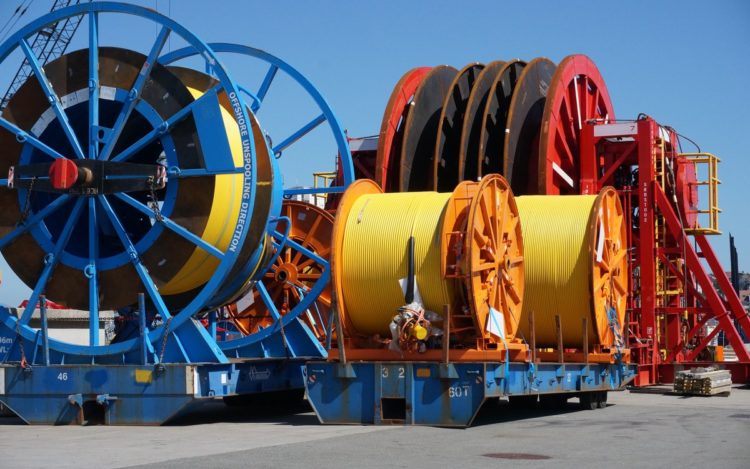
Russia, which is often seen as an economic midget relative to most European countries, might also have weaponized the European economy.
On April 3, the subsea sensor network (LoVe Ocean) – a 66 km cable network off Vesteraalen (Northern Norway) – went black. According to the Institute of Marine Research, a 4.3 kilometre long and 9.5-ton submarine cable has gone missing.
The network is equipped with a range of chemical, physical, and biological sensors, including echo sounders, hydrophones, sea current meters and cameras, which can follow life in the sea from the seabed to the surface. The observation system covered the entire continental shelf off Vesteraalen down to a depth of 2,500 meters.
While LoVe Ocean has been established as a research laboratory to monitor biological activity such as spawning behaviour in Norwegian fish stocks, it also has state-of-the-art equipment capable of detecting submarines and other maritime activity. Institute of Marine Research has, according to the media, consequently, a collaboration with the Norwegian Defense Research Establishment (FFI), which extracts and analyzes signals related to military activity.
How does this impact the Western economy and to what degree does this impact the present military build-up around Ukraine?
According to the Norwegian Intelligence Service’s annual report (Focus 2021),
“more than 97% of all traffic on the internet runs through subsea cables. Practically all Western countries today rely on infrastructure on the ocean floor for communications and for maintaining economic activity. It is extremely difficult to protect cables and other vital underwater installations against sabotage. The global network of subsea cables has a built-in surplus capacity and back-up solutions, but in the event of major damages and breakdowns, these solutions will not be able to handle the amount of information. A major breakdown of the subsea cable network would affect functions that are vital to society and complicate any form of international cooperation. [ ] NATO believes that Russia is developing offensive capabilities against underwater installations as part of its strategic deterrence. Russia’s build-up of underwater capabilities is becoming a serious threat to subsea cables and underwater systems.”
Undersea data cables are critical to the internet. Financial transactions worth over $10 trillion each day are done online and any disruption would have an immediate effect on the economy, potentially crippling the banking system and halting commerce. This hidden network forms the backbone of global communications but is surprisingly vulnerable to interference by hostile actors.
In a wider context, and if we believe Russia to be the perpetrator in Northern Norway, the incident can be interpreted as a demonstration of “will and ability” to cut subsea cables, and as such, an undeclared threat. After all, the global network of subsea cables forms the backbone of global communications and financial transactions. If the West imposes more painful sanctions against Russia (e.g. in case of an escalation in Ukraine), Russia stands ready to cut the economic “lifeline” of the West. NATO and the EU might find it convenient to restrain its “massive response” to a vocal outrage and tons of concern.
Exponential rise in disinformation
The increased Russian self-confidence and evolving situation in and around Ukraine have lately resulted in a significantly sharper Russian rhetoric. Amidst Russia’s mounting military build-up along Ukraine’s borders, the pro-Kremlin media turns to increasingly belligerent rhetoric directed at both NATO and Ukraine. The EUvsDisinfo database contains over 1,100 examples of pro-Kremlin disinformation claims about NATO, alleging that the alliance is both “provoking” and “encircling” Russia.
Ukraine, however, is experiencing an exponential rise in disinformation. According to Ruslan Demchenko, First Deputy Secretary of the National Security and Defense Council of Ukraine, Ukraine is presently exposed to a new wave of destabilization by Russia. This includes both attempts to undermine Ukrainian energy security and disinformation agitating social unrest.
The latter includes an anti-vaccination campaign, discrediting Ukrainian authorities on various charges (e.g. efforts to fight the pandemic, being under the control of the West, corruption, neglecting national interests, e.g. through “Wagnergate”), as well as rumours of the allegedly inevitable coup d'etat and a new military escalation in the first half of 2022.
Does it have any effect? According to a recent opinion poll published by the Kyiv International Institute of Sociology, only 28.2% of Ukrainians approve of President Volodymyr Zelenskyy’s performance. Despite evidence of progress, 71.1% of Ukrainians believe the country is headed in the wrong direction. The level of trust in government, parliament, politicians, political parties, public institutions, and agencies are (as always) extremely low.
While the results might not be attributed to disinformation alone, the ongoing information war reinforces existing structural weaknesses and vulnerabilities, continuously undermining the stability of Ukraine. More than a third (35%) agree that the ruling party should be driven out of power with protests.
A full-scale invasion is not likely
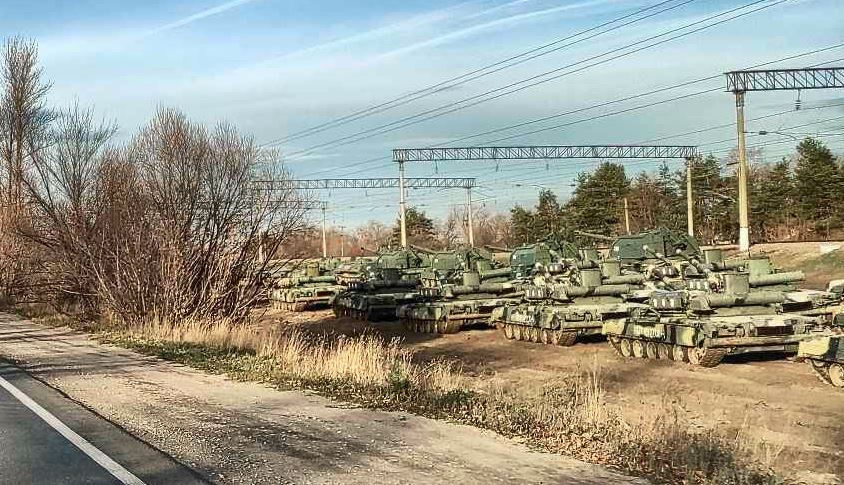
According to Brig. Gen. Kyrylo Budanov, head of Ukraine’s defence intelligence agency, Russia is preparing for an attack by the end of January or beginning of February.
“Such an attack would likely involve airstrikes, artillery and armour attacks followed by airborne assaults in the east, amphibious assaults in Odesa and Mariupol and a smaller incursion through neighbouring Belarus,” he told the Military Times.
His assessments come after several reports of a new military build-up along the Ukrainian border triggering numerous meetings between the USA, Ukraine, NATO and the EU.
NATO has confirmed that Russia has amassed heavy weapons, tanks and troops near Ukraine. According to the Washington Post, US intelligence believes the “plans involve extensive movement of 100 battalion tactical groups with an estimated 175,000 personnel, along with armour, artillery and equipment.”
It is assessed that Russia has capabilities in place along the Ukraine border to carry out a swift and immediate invasion, including erecting supply lines such as medical units and fuel that could sustain a drawn-out conflict.
The Institute for the Study of War (ISW) sees three possible scenarios, of which a full-scale invasion is assessed as unlikely.
This strategy has worked brilliantly for more than seven years already.
While the military build-up has added both concern and tension to an already strained relationship between Russia and the West, key policy- and decision-makers are more than ever feeling the pressure of an aggressive Russian foreign policy and coercive diplomacy.
The number of ceasefire violations along the frontline in Eastern Ukraine adds to pressure. It has been increasing significantly and continuously since this summer (July: 5,930, August: 7,717, and October: 10,520). November ended with nearly 16,000 ceasefire violations, having seen both increased intensity and a far higher number of explosions than since July 2020.
A statement by President Lukashenka of Belarus has further increased the tension. On November 29 he stated that his forces “will not stand aside” in Moscow’s confrontation with Kyiv and “it is clear whose side Belarus will take.”
However, if the purpose of war is to pursue a better state of peace, it is essential to conduct war with constant regard to the peace one desires. Since war is never declared and conventional warfighting is limited, Hybrid War is optimally designed to restore “peace” when the war is won. It is designed to ensure a cost-effective victory while allowing for a near peaceful coexistence.
A full-scale invasion would destroy this effect. Additionally, it would be extremely costly both in terms of civilian and military casualties, diplomatic relationships, and economic costs. As Olga Tokariuk rightfully predicts, if
“Putin decides to launch a full-scale offensive, territorial defence units would be formed and a bloody guerrilla war would start. Capturing territory might be an easy part, considering Russia’s superiority at sea and in the air, but holding it would become a nightmare.”
It would destroy any hope for rapprochement between the West and Russia. More importantly, it would render the Hybrid War that takes place across the West useless.
Russia intends to be victorious, but its strategy does not necessarily involve a military victory. That said, one military option fits the Hybrid War strategy.
Russian strategy is based on an analysis of operations conducted by the West during the last decades. When doing a similar analysis of Russian intentions, it might, therefore, be useful to revisit the very same operations.
- Most operations were justified by the fear of humanitarian crises. Russia has signed up for the justification of “Responsibility to Protect” (RtoP) and humanitarian intervention. In 2008, Russia argued that it was “necessary to end what it termed a genocide against South Ossetians and to protect Russian civilians (many South Ossetians had received Russian passports).” In 2014, Putin claimed that the annexation of Crimea was a response to “real threats” to Russian-speaking minorities in the region.
The humanitarian crisis in the temporarily occupied territories of Donetsk and Luhansk regions (and therefore, the Russian intervention) has been in the making for more than seven years already. Russian “passportification” started there in 2019 already, turning Ukrainians into “Russian citizens.” Russia has not only caused a dire and deteriorating humanitarian situation but also conducted an intensive disinformation operation depicting Ukraine as being responsible for the atrocities. It has simultaneously created the national legal framework, developed the key strategic documents and built the military capacity needed to conduct a “humanitarian” intervention. Russia has even argued for an international peacekeeping mission to Donbas, on terms unacceptable for both Ukraine and the West (as a possible justification why Russia had to act unilaterally). - Several operations included two or more of the following military options: Peacekeeping Forces (or boots on the ground), No Fly Zone, and Maritime Embargo. If Russia were to follow the same design and the same justification, Ukraine would find itself facing regular Russian forces in Donbas while having lost control over both the air space and maritime domain. Russian forces would fabricate incidents and disinformation, “justifying” a step-by-step destruction of the Ukrainian forces employed along the frontline. Facing a 3-dimensional threat would have a tremendous psychological impact on both the Armed Forces of Ukraine, civil society and key policy and decision-makers across Ukraine.
A peace enforcement operation would be limited in scope and costs, but simultaneously would completely change the strategic situation. Under its cover, Russia would not be “undermining Ukraine’s territorial integrity” per se but simply acting in the spirit of “Responsibility to Protect.”
It would of course be a lie, but not a bigger lie than the international community has already swallowed for years. The humanitarian crisis, the narrative, justification, diplomatic initiatives, and military design would fit perfectly into the Hybrid War design.
Conclusion
Russia’s attempt to destabilize Ukraine from within and blackmail the West into concessions continues.
As all eyes are drawn to the military build-up, it is crucial to remember that the battlespace of the Hybrid War occurs inside the cognitive spaces of populations and key decisions- and policymakers. It aims to destabilize nations from within, create fear and foster inaction. Russia aims to confuse and manipulate both Ukraine and the West into making the political decisions Russia wants. It wants Ukraine to give in, and the West to remain passive.
Putin proved the point when he recently denied any intention to invade but welcomed the alarm raised by the West as evidence his actions had gotten the attention of the US and its allies, which he accused of failing to take Russia’s “red lines” over Ukraine seriously enough.
President Putin wants a dialogue on a legal and juridical binding agreement that will rule out any further eastward expansion of NATO, killing any hope Ukraine might have of collective security guarantees. The psychological impact of a “Munich Pact” would be devastating on Ukraine. While there are many arguments why the West will not take the bait, the statement itself raises uncertainty.
A Russian full-scale invasion is not likely. Besides the huge costs, Russia doesn’t need a full-scale invasion because the hybrid war works and, little by little, is bringing Russia closer to a victory. Neither Ukraine, the EU nor NATO have yet come up with an efficient counter strategy.
Russia only needs some adjustments of the military element of the Hybrid War. It is increasing the psychological pressure and efforts to destabilize Ukraine. All opinion polls underline the lack of trust between the authorities and the population and the belief that Ukraine is moving in the wrong direction (even though the realities indicate otherwise). The fact that more than a third agree that President Zelenskyy's Servant of the People party should be driven out of power with protests is downright disturbing.
That said, a humanitarian intervention – or a limited peace enforcing operation including a No-Fly Zone and Maritime Embargo – fits the Hybrid War strategy perfectly. The consequences would be as devastating as a full-scale invasion, while the costs would be negligible.
Even a limited offensive, however, will have grave consequences for European security. It will bring a Russian victory one step closer, with devastating consequences for both Ukraine and Europe. It will also further embolden both Russia and China.
The Russian Hybrid War is in a sense like a pandemic. Lacking a resolute response and extreme measures, it is bound to spread. It is high time for the West to change its strategy towards Russia. We should not negotiate with or let us be blackmailed by rogue nations.
Read More:
- Putin’s offer to “stop NATO expansion”: the reason behind Russia’s month of aggression
- “Moscow regards concessions as a sign of weakness,” says Ukrainian civil society ahead of Biden-Putin call | Open letter
- Militants of Russia-controlled “republics” in highest battle readiness, Ukraine intelligence says
- Ukraine will become NATO member when three capitals change their views, Foreign Minister says
- An ultimatum in any language: experts on Russia’s demand that NATO not expand
- Thousands in Kyiv demand resignation of Zelenskyy and his office’s chief


